|
2022-6-1
又开车去了坐落在塞勒姆(Salem)小镇上的迪美博物馆(Peabody Essex Museum),详细参观了荫余堂和迪美博物馆的外销艺术展览,其中有一幅清中期制作的壁画,是在荷兰东印度公司就职24年的苏格兰商人 James Drummond 于1807年离开广州的时候,从海上运回苏格兰并装饰在他在博世郡(Perthshere)城堡中的十九扇壁画中的一部分,占据了一个展厅,金碧辉煌,壮观雄伟,描写的是广州十叁行的市井风俗,都详实有趣,栩栩如生。壁画本身的命运,也一波叁折,有很凄美的故事,堪比清明上河图。
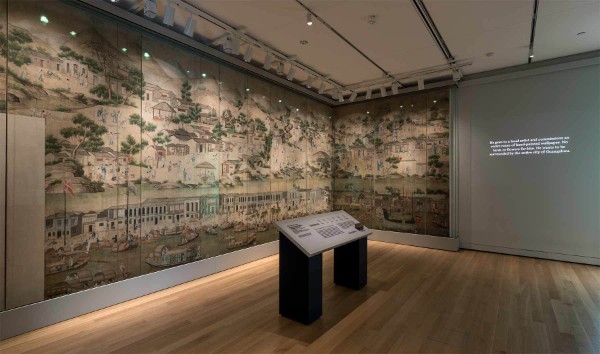
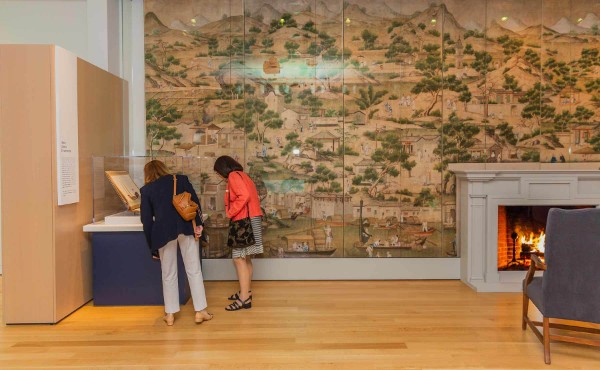
The Drummond wallpaper. Hand-painted in China in watercolor circa 1780, the lively scene depicts the hongs - foreign factories - of Canton (the city now known as Guangzhou) - the only Chinese city open to foreign trade at that time.
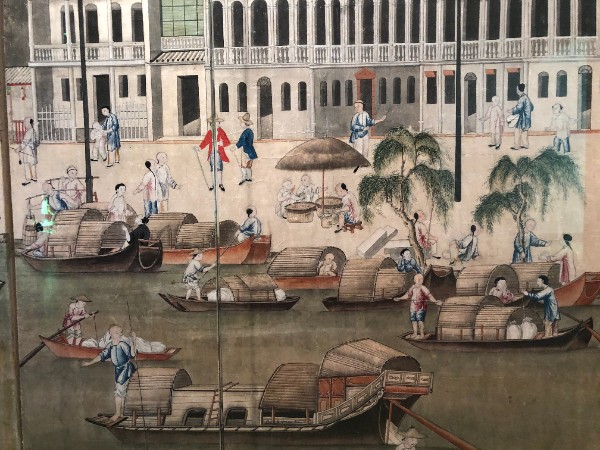
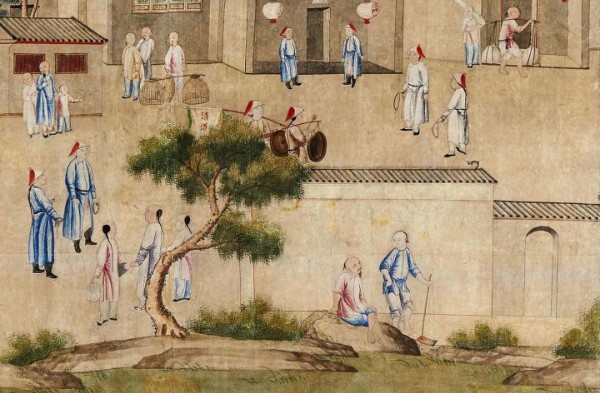
Scottish royalty. Enter James Drummond, captain for the East India Tea Company and eighth Viscount of Strathallan, a title that came with a castle. Drummond commissioned the wallpaper, brought it back with him on one of his several trips to China, and hung it in the Ladies' Salon of his castle for almost 200 years. Sometime in the 1980s, it was taken down off of the wooden frames on which it was tacked, rolled up, and began a peripatetic journey. When the paper first came up for sale Bill Sargent, then curator for the Peabody Essex Museum, wanted it but it was in very poor condition and the cost for repair prohibitive.
这是目前所知唯一的广州十叁行壁画,瓷器上面的广东十叁行绘画则比比皆是。而且在迪美博物馆里长期展出的,就有那麽一只带广州十叁行画片的潘趣碗。

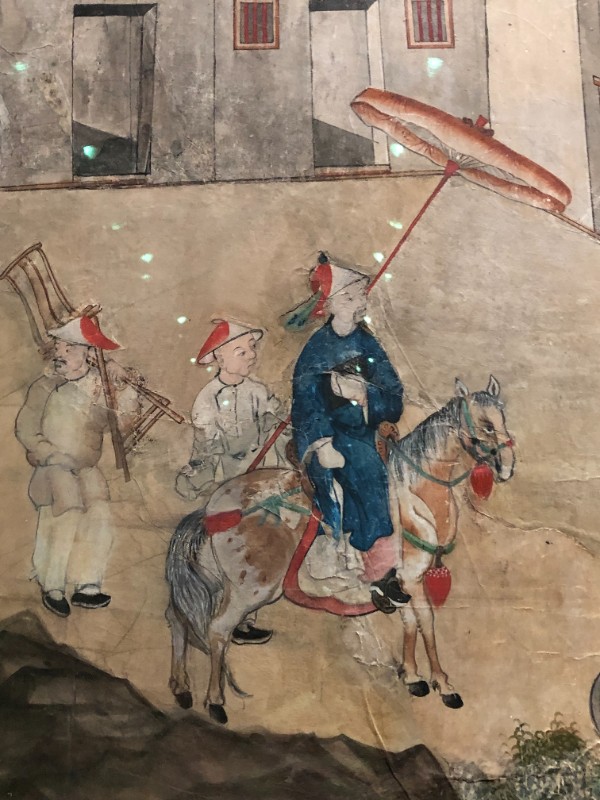
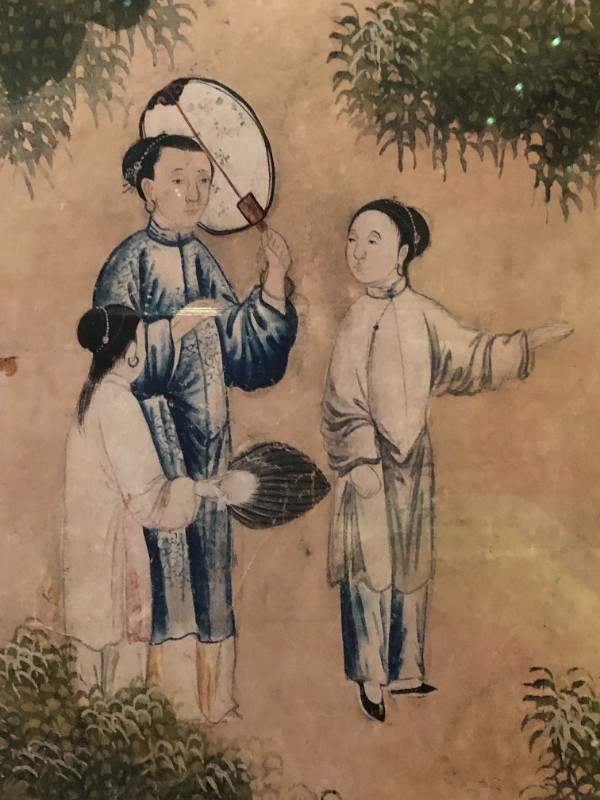
James Drummond, 8th Viscount Strathallan (1767-1851) brought his Chinese wallpaper back with him from Canton. Drummond, was a nephew of the London banker Robert Drummond of Cadland, Hampshire, and prospered in the service of the East India Company in China. He began his East India Company career as a supercargo and became assistant to the Head of the Committee at Canton in 1792, and by 1800 he was a member of the Select Committee there and the following year became President, a post he held until 1807 when he returned to Scotland. The 18 rolls of 12-foot by 4-foot mulberry bark and bamboo paper are hand-painted with a scene of the ‘hongs’, or foreign factories of Canton (Guangzhou), which enable its dating to c.1780. It decorated the walls of the Ladies’Salon at Strathallen Castle for almost 200 years, before it was acquired by the Peabody Essex Museum in Salem, Massachusetts. It is the only known example of a historic Chinese wallpaper showing the hongs at Canton, a motif that was shown more often on Chinese export porcelain.
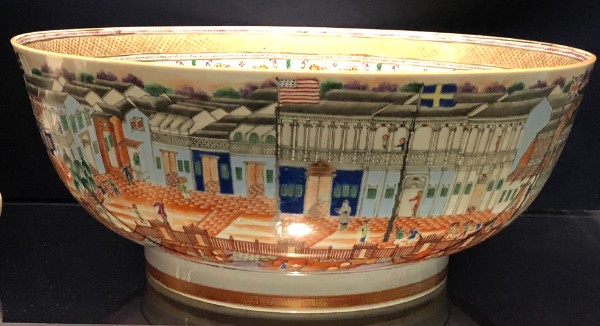
广州十叁行行长们的画像,在迪美博物馆里也有展览,其中的一位,是广州茶叶和丝绸商人李致祥(Eshing Lee)。李致祥的父亲李新华与林则徐是同科进士,又同入翰林院攻读,凭藉这层关系,李致祥成了林则徐广州禁烟的得力助手,并娶美国传教士之女苏珊为妻。李致祥的儿子李泉石是清末六品武官,同盟会元老,是黄兴的挚友。

该油画为中国最早的西洋人物画家关乔昌(林官,Lam Qua)的爷爷关作霖(Guan Zuolin)于1785-1805年在广州期间所绘。关作霖又叫史贝霖(Spoilum),被称为第一个凭西方传统画像而获得名声的广东艺术家和中国最早的油画家。他活跃于1774年-1810年左右,作品收藏在当今世界不少收藏机构手里。Spoilum 具有非凡的才能和多才多艺,他学习了欧洲的倒玻璃绘画技术,将欧洲凋刻的镜像复制到玻璃板的背面,并专注于在西方风景前摆姿势的欧洲人肖像。创作了一些最着名的中国行商画作,包括潘有度和李致祥等人。
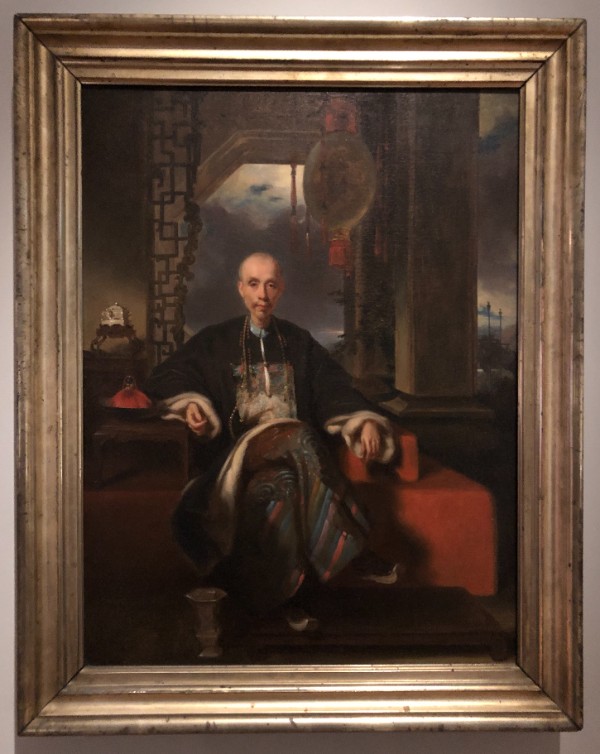
广东十叁行怡和行的行商伍秉鉴的肖像,迪美博物馆收藏
伍秉鉴(1769-1843),别名敦元,字成之,号平湖,商名浩官第二(Howqua II),叁品顶戴花翎,是清中叶着名行商,广州十叁行之一怡和行的行主。广东南海人(故居位于广州市海珠区溪峡一带),祖籍晋江安海。生前他所经营的怡和行垄断了中国的对外海上贸易,又通过他的义子铁路大亨约翰・穆瑞・福布斯名下受其资助的旗昌洋行参与投资密歇根中央铁路,涉足美国铁路工业。伍秉鉴的蜡像,在伦敦蜡像馆展览经年。这张肖像的原作,是英国画家乔治·钱纳利(George Chinney)。可是人怕出名猪怕壮,因为伍秉鉴是当时的世界首富,所以他这张肖像的复制品,在世界各大博物馆珍藏的不下十几幅。这一幅作品,就是 Lam Qua 的彷作,轻易不拿出来示人的。
Wu Ping-Chien, known as Howqua, lived from 1769 to 1843. As the preeminent hong merchant, he amassed one of the greatest fortunes of the early 19th century. Worth $26,000,000 in 1830, he invested in American railroads and other new technology. Renowned in the West, his wax figure was exhibited at Madame Tussaud's in London and a clipper ship was named after him.
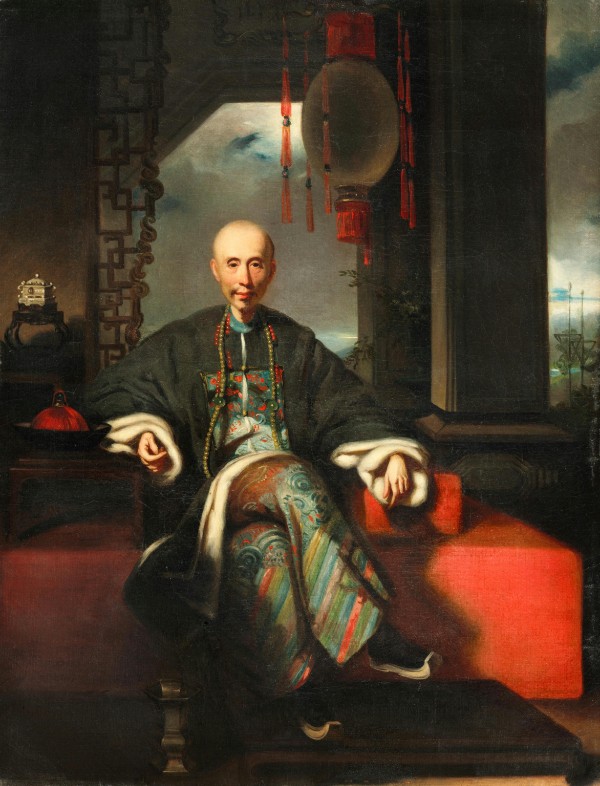
广东十叁行怡和行的行商伍秉鉴的肖像, Attributed to Esther Speakman,(American, c. 1823 - 1875). After George Chinnery, English, 1748 - 1852,费城博物馆收藏
This dramatic portrait of the vastly wealthy, highly respected Chinese merchant Hou Qua (1769–1843), one of a small number of individuals that the emperor allowed to trade with the West, is based on a composition by British expatriate artist George Chinnery, who was active in southern China. Chinnery’s painting was brought to Philadelphia in 1828 by Benjamin Chew Wilcocks, a friend of the artist and a businessman and diplomat who played an important role in the American China trade. Wilcocks subsequently commissioned two additional pictures of Hou Qua, one from Philadelphia portraitist Thomas Sully (1783–1872) in 1828 and another, seen here, by American artist/copyist Esther Speakman, who is known to have exhibited such a canvas in Philadelphia in 1843. These multiple representations of the Chinese trader demonstrate the strength of the US market for Chinese imagery, which provided work not only for foreign artists but also for Americans.
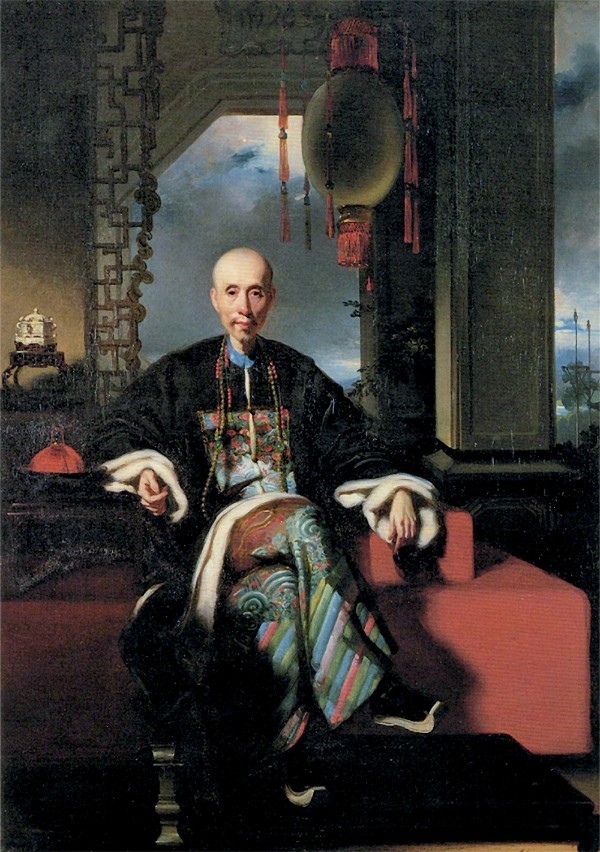
广东十叁行怡和行的行商伍秉鉴的肖像 - Style of Chinnery (possibly by him). Houqua, ca. 1825. Oil on canvas, 26 × 19 in. (66 × 48.3 cm). Independence Seaport Museum, Philadelphia (88.10).
|
|
